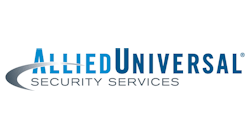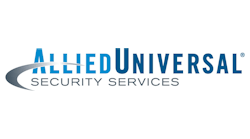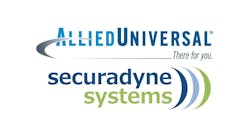The global pandemic rapidly upended the way we work and live our daily lives. As the government identified security and public safety as part of the essential workforce, our universe has been front and center for the sweeping shift taking place with policies and procedures to minimize the effect of the virus. On so many levels, COVID-19 has changed the higher education sector and the post-pandemic world will feature colleges and universities that have reinvented themselves to thrive in a post-COVID world.
As the majority of institutions of higher education opted to shift from on-campus to online education from March 2020 through May 2021, the regulatory environment (Clery Act, Title IX, etc.) remained intact and enforceable on campus, even in the absence of a present student body. In many cases, higher education institutions represent large real estate holdings with continuing premises-related liability. Hence, there was a continued need to secure property from damage, trespass and reportable incidents.What Does Normal Look Like?
So, as colleges nationwide plan for a ‘more normal’ year in 2021-22, the effects of the past year will linger. The vast majority of college classes will be in-person, and more classrooms will operate at or near their normal capacity, barring unexpected developments with emerging variants of the virus. Some colleges will continue to require mask-wearing, in accordance with public health guidelines. Many colleges are also planning for laboratories and other research facilities to operate in-person and at or near their normal capacity with mandatory mask-wearing.
Health and welfare will continue to be a priority for colleges in 2021-22. Some colleges are requiring that students, faculty and employees in the U.S. be fully vaccinated by the start of the fall semester while also providing medical and religious exemptions. Proof of that vaccination is generally required to be uploaded to university portals. Many colleges are offering vaccinations at their Student Health Centers. As most colleges require on-campus students to be vaccinated against other communicable diseases including measles, mumps and rubella, government agencies are suggesting that schools may require the COVID-19 vaccine. However, some states and several lawsuits are arguing against mandatory vaccination.
Many colleges made COVID-19 testing a continual requirement in 2020-21. Now more colleges are relaying that students, faculty, and employees, who are fully vaccinated and have uploaded their proof of vaccination are exempt from their school’s Community Testing program, will no longer have to engage in mandatory testing and from quarantining following close contact exposure to someone with COVID-19 (assuming no symptoms).
As campuses move towards pre-COVID routines, they will also have to deal with another year of change with the anxiety and challenges that persist. Residence halls will continue to reserve some rooms in housing for isolation and quarantine and aim to otherwise permit normal occupancy of student residence halls, lounges and common spaces.
It has never been more important for campuses to control what they can and take preventive measures to ensure health and safety for the future. As social distancing mandates altered the way we go to work, dine, shop and visit, service providers also amended their business practices. For campus security professionals, returning to the workplace during a pandemic can was fraught with tension as we all navigated this new terrain. The Occupational Safety and Health Administration (OSHA) and The Centers for Disease Control (CDC) recommend social distancing procedures, regular disinfection and sanitation and foot traffic management.
Security professionals are implementing a variety of screening services to ensure the safety and health of campuses. Campus security professionals have been working with college administrators to design and implement screening solutions that best fit their environment, requirements and existing security operations. Today’s campus security professional is a highly-trained individual with access to cutting-edge technology including artificial intelligence which consists of state-of-the-art technology that connects artificial intelligence and human response to better protect people with accurate real-time data and safer social interaction.
- Temperature Screening Solution - When determining which screening applications will be most effective on-campus, campuses need to determine the number of access points that require screening, traffic flow requirements, whether there’s variability in traffic flow, and if integration is feasible with existing access control systems. Screening services come in multiple forms and include:
- Screening Questionnaire – A set of questions related to risk factors (travel history, current wellness).
- Close Contact Screening –Campus security professionals with close contact temperature hand-held, FDA-approved gauges that allow for non-contact screening to detect differences in temperatures and pattern changes. Alarms show on-screen when an object or person is detected to have an elevated temperature.
- Distance Screening – Utilizing thermal cameras with associated artificial intelligence software and equipment, campus security professionals are using advanced distance screening technology, with no personal protective equipment (PPE) required if student, visitor or employee can maintain a distance greater than six feet, for high traffic situations.
Distance screening technology includes mounted imaging kiosks which include specialized cameras integrated directly with artificial intelligence technology that analyzes and compares data against predefined parameters. On-screen instructions and automated alarms provide a convenient solution for high-capacity screening.
High traffic distance screening technology also includes walk-through temperature sensors with built-in cameras that detect apparent temperatures of people by reading the energy emitted from the subject’s surface. Hot spots can indicate a fever or underlying infection.
Continual Training is Key
Detailed, comprehensive training is extremely important for campus security personnel. Training methods include classroom training, field training, hands-on simulation training, tabletop exercises, workshops, E-learning, certification courses, Guard Card courses and annual refresher classes.
Institutions are now tasking campus public safety with a much wider array of services including pandemic screening, conducting mental health/wellbeing checks while providing concierge-level security services. These increased demands coupled with the traditional public safety duties have created a tremendous need for higher-level personnel and increased / on-going learning and development programs. Campus public safety is a dynamic sector that demands that the security professional engages in extensive training above and beyond traditional duties and now includes how to use screening methods for elevated body temperatures, understand the signs and symptoms of heat stress, how to identify mental health issue indicators, handling slips, trips and falls, workplace fire safety, workplace violence and active shooter, dealing with difficult situations and people, emergency response and disaster planning, hazardous materials and best practices for stadiums and amphitheaters.
Ever-Evolving Technology
As standard practice, security supervisors implement a plan that includes a network of people, processes and technology to deter and mitigate threats. Law enforcement is a partner with physical security and may ask to access video footage. Today’s access control includes biometrics with video analytics with facial recognition. Video analytics is also able to measure and gauge behavior, social distancing, detect suspicious packages, and instantly alert security and law enforcement so that preemptive action can be deployed. Social media platforms are monitored using specific keyword analytics to assess if there are any potential issues that are happening.
Campus security professionals together with local, state and federal law enforcement are able to work together to leverage multiple technologies and share information to mitigate potential threats. Ultimately, it is important to determine the policies and procedures that are in place that allow security personnel, law enforcement and other entities to effectively work together as a blended team.
Most colleges will mandate distancing requirements and food-service-specific COVID-19 protocol in dining halls based on the latest public health guidelines. Campus life, including club meetings, intercollegiate and club sports are expected to resume at most schools.
As much of the nation’s classroom, student support and research activities return to an in-person experience, most administrative operations that support these functions will also return to the in-person status in the Fall. Moving to remote and hybrid work enabled the continuity of university operations at colleges nationwide. The transition to in-person operating status will be an adjustment, particularly for those who have been remote for much of this time. Colleges need to continue to be vigilant in following public health guidelines; to recognize that the transition back to campus — like the transition to remote — will have its own challenges, and to be cognizant that we will not know all of the challenges in advance.
As more Americans are vaccinated and positivity rates and new cases continue to fall, colleges will have greater confidence about in-person activities and operations. There will still be safety protocols in place for the Fall. They will continue to closely watch for signs of COVID-19 spread in our community, and we will closely follow public health guidance as well as data about infection levels.
As indicated in every institution’s Clery Act-required Annual Security Report, campus safety and security are key factors in brand preservation and advancement. Given declining enrollment numbers at some colleges, institutions with strong brands will be best positioned to weather the storm.
As colleges review plans for bringing employees back to campus, they are examining the role of teleworking and offering more flex-work opportunities for some administrative staff. COVID-19 has followed an unpredictable course, and public health guidance has shifted in response to it, necessitating shifts in higher education’s health and safety practices. Accordingly, the plans are subject to change; are dependent on public health guidance, local health conditions, safety requirements/restrictions; and assume high vaccination rates among the college community. As with other sectors, COVID-19 has exposed emergency management and response weaknesses across all of academia. Institutions have learned – in many cases, the hard way – that preparation must occur in advance of the emergency. Technology will likely play an increasingly prevalent role in threat awareness, emergency response and trackable security metrics.







